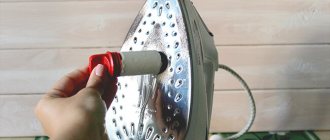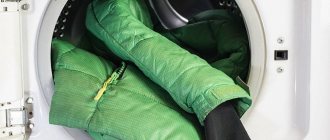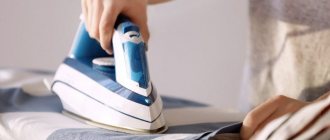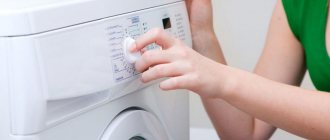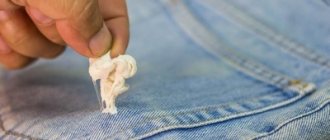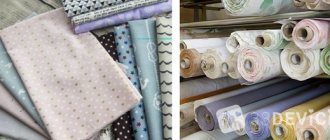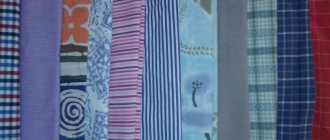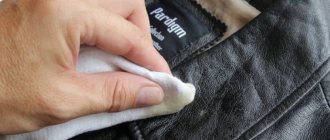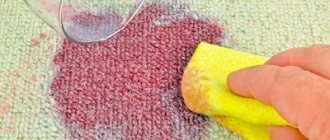Why does fabric stick to the iron?
Failure to comply with them leads to premature wear and damage to things. One of the most common problems is fabric sticking to the iron platform. The main difficulty is that the iron is no longer suitable for use. It is quite difficult to remove pieces of fabric stuck to the iron on your own. Knowing the causes will help prevent the problem.
Often, various contaminants appear on the base of an electrical appliance during operation: carbon deposits or scale.
Causes:
- overexposing the iron to things - this often happens when attention is distracted;
- sensor malfunction, incorrect heating display - ironing delicate fabrics at maximum temperature leads to burning;
- the presence of metal, cellophane, plastic, leather fabrics on things;
- violation of the rules for cleaning the surface of the iron - for these purposes it is not recommended to use knives, metal brushes, or powders for treating kitchen surfaces;
- excessive temperature conditions - microfibers remain on the sole of the iron, the accumulation of which leads to the formation of carbon deposits;
- the use of low-quality water - limescale in the water leads to the formation of roughness on the surface of the iron, a decrease in the quality of sliding, and the formation of carbon deposits;
- damage to the platform - scratches, microcracks reduce the quality of ironing;
- failure to follow the rules for ironing delicate fabrics.
Most often, burning occurs due to inattention to the recommended temperature conditions and leads to difficulty in ironing.
In most cases, fabric sticks to the iron when ironing at the wrong temperature. When ironing delicate fabrics, it is recommended to use damp gauze.
How to remove stuck fabric from an iron
You should first find out the type of surface of the iron platform, which will help you choose the right cleaning method. The procedure is most often carried out with the iron turned on; you should worry in advance about the place where the device could be plugged into an outlet. When using special store-bought products, it is recommended to follow the instructions exactly. You will need a soft cloth for cleaning. During the procedure, you should keep your distance from the steam holes. Following these rules will help prevent possible problems.
It is advisable to clean the sole as soon as contamination occurs.
Cleaning with vinegar
Vinegar will help get rid of burnt fabric.
Cleaning methods:
- Wipe the platform with a cloth soaked in vinegar—this method is recommended for removing fresh, mild plaque.
- Place a cloth soaked in a large amount of vinegar under the iron overnight - this method is suitable for removing old stains. Under the influence of an acidic liquid, the stain will soften and peel off. At the final stage, it is recommended to wipe the surface with a dry cloth.
Be careful: vinegar should not come into contact with the iron body during the procedure.
Laundry soap
It is recommended to use laundry soap immediately after stains form. It is recommended to apply laundry soap to the hot sole. A cold iron should be cleaned of traces of dirt.
The hot soleplate of the iron should be generously lubricated with laundry soap in places where burns accumulate.
Salt
Salt is considered the most effective means for cleaning an iron. Its main advantage is its accessibility; it is present in every home without exception.
Recipes:
- Sprinkle ½ cup of salt in an even layer, iron the additive with an iron heated to maximum temperature until the stains completely disappear.
- Wrap a handful of salt in a natural cloth and carefully apply it to a heated iron until the stains disappear.
Cleaning your iron with salt is the easiest way to get rid of carbon deposits on the soleplate.
Important! It is not recommended to use salt when cleaning Teflon coating; any abrasive compounds are also prohibited.
Candle paraffin
When cleaning an iron, paraffin shows its effectiveness. An ordinary candle is suitable for these purposes. The method allows you to get rid of small contaminants and helps in removing plaque of various origins.
Application steps:
- wrap the candle in cotton fabric;
- run a candle over the heated sole, the melted paraffin will flow down along with the dirt.
Paraffin can get into the grooves and stain your items during subsequent ironing.
During the procedure, a small angle must be maintained. This will ensure that the cleaning solution drips onto the previously prepared rag. At the final stage, it is recommended to wipe the surface with a damp cloth.
If there is a “steam” function, the holes on the soleplate of the iron are additionally cleaned. To do this, press the steam button several times to fill the water tank.
This will help prevent greasy wax stains from forming on the fabric.
Toothpaste
Toothpaste is suitable for cleaning stainless steel surfaces. To do this, you need to apply the product to a preheated sole. Using an old toothbrush will help increase the effect; it will allow you to scrub away the carbon deposits. At the final stage, the surface should be wiped with a damp cloth and wiped dry.
Using a toothbrush, you need to treat areas of contamination on the sole of the device.
Important! When choosing a paste, preference should be given to regular white paste without abrasive particles or other inclusions in the composition.
Baking soda
When cleaning metal surfaces, it is recommended to use baking soda. The substance has abrasive properties and caution should be exercised when using it.
Cleaning steps:
- mix soda with water;
- apply the composition to a cold surface for 20 minutes (for old stains);
- Gently wipe away marks with a soft cloth;
- Wash off the residue with a damp sponge.
Soda is a simple and cheap means at hand that effectively removes carbon deposits on the base of the device.
Important! It is recommended to use soda in cases where other means have proven ineffective.
Cleaning irons with Teflon and ceramic coatings
There are many ways to remove stuck fabric from the soleplate of a modern iron, most of which are available at home. Let's look at the most reliable ones.
Cleaning Pencil
This product is suitable for cleaning burnt soles made of any material: metal, ceramics, Teflon. Removes old traces of burning. Sold in hardware and construction stores, on online platforms. The price varies between 15-150 rubles per piece.
The cleaning pencil does not contain abrasives, so it does not leave scratches on the soleplate of the iron or damage the heating elements. There are products that remove not only burnt fabric, but also traces of scale. The only drawback of the pencil is the strong smell during cleaning.
Examples of cleaning pencils:
- Frash – 90 rubles;
- Topperr IR 1 – 80 rubles;
- Bon – 70 rubles;
- Uniplus – 65 rubles;
- Magic Power – 55 rubles;
- Brite – 35 rubles;
- Snowter – 25 rubles.
The operating principle of all presented products is the same, so you can safely choose the most budget-friendly options.
How to use a cleaning pencil?
- Heat the device to the temperature specified in the instructions (usually 135-150 degrees).
- Tilt the iron 30 degrees. Rub with a pencil in places where burning has accumulated. The product will begin to melt, collect particles of adhering tissue and flow down. Do not press hard on the pencil, otherwise it will break abruptly and you will get burned.
- Let the device cool down. Remove any remaining pencil with a dry cloth.
- Use a stream of steam to remove any stuck-on fibers from the iron's holes.
- Iron the cotton fabric to secure the result.
We recommend: What to choose for ironing clothes – an iron, a steamer or a steam generator?
Paraffin candle
This product is a home equivalent of a cleaning pencil. Suitable for removing only fresh traces of burnt fibers. The procedure is as follows.
- Wrap a long paraffin candle in cotton cloth.
- Plug in the iron and set the temperature to medium.
- Tilt the device and begin to move the candle along the surface of the sole.
- Wait until the iron cools down and then wipe it with a damp cloth.
Hydroperite tablets
You can buy them at the pharmacy. Hydroperite is a combination of hydrogen peroxide and urea, a substance found in cleaning pencils. The product emits a pungent odor, so we recommend scrubbing the iron while wearing a protective mask or on an open balcony.
How to use hydroperite tablets?
- Heat the iron to a temperature of 135-150 degrees, disconnect from the power source.
- Use an uncrushed tablet to wipe the surface with gentle movements, removing burnt marks.
- Wash off any remaining product with a damp cloth.
Acetone
The aggressive substance dissolves burning particles, so cleaning the sole later becomes easy. Paint thinner and nail polish remover are suitable for cleaning the device. Soak a rag in the liquid and wipe away the stains. The iron is turned off. Finally, remove any remaining product with a damp cloth.
When using liquids with acetone, make sure that they do not come into contact with plastic surfaces. This may damage the device.
Soap solution
If little burning has stuck, wash the soleplate of the iron in the usual way. The rag is moistened in one of the following solutions:
- liquid soap;
- dishwashing detergents;
- shower gel;
- shampoo.
Then wipe the device. To enhance the effect, apply pure liquid soap to the soleplate of the iron and leave for 30 minutes. Then rinse off the product with water and wipe the surface with a dry cloth.
Vinegar, citric acid
Every housewife has these liquids in her house. If the fabric is burnt on the iron, wipe its surface with a swab dipped in vinegar or citric acid solution (2 sachets per glass of water). Rinse off the product with a damp cloth. By the way, cleaning the iron with citric acid will help not only deal with burnt soles, but also soften the scale inside the device. This method is suitable for removing fresh traces of burning and is used for preventive purposes. But there is a more radical method.
- Pour vinegar into a wide pan to a level of 1 centimeter.
- Heat the iron to medium temperature, then unplug.
- Place the device with the sole down in the tray with vinegar. Leave for 6-8 hours (overnight is possible).
- Remove any remaining burnt material with a sponge and wipe the iron with a damp cloth.
If you hate wasting a lot of vinegar, then use a cotton cloth soaked in the product instead of a tray. Carry out the procedure in a well-ventilated area, as the solution has a strong smell and irritates the mucous membranes of the eyes and respiratory tract.
Hydrogen peroxide (3%) and ammonia
You may have these items in your first aid kit. You can wipe off stuck fabric using hydrogen peroxide or ammonia in the following ways.
- Soak a waffle towel in the solution, spread it on the board and iron it thoroughly until traces of burning are completely removed from the device.
- Heat the iron slightly and then unplug it. Wipe stains from stuck fabric with a cloth soaked in hydrogen peroxide or ammonia. Use cotton swabs to clean the holes.
We recommend: Is it possible to clean an iron with citric acid: 6 simple tips
When working with ammonia, keep in mind that its vapors are harmful to the respiratory system. It is advisable to wear a respiratory mask or at least open all the windows in the room. Never wipe a hot iron with hydrogen peroxide or ammonia.
Iron cleaning products
Stores sell special pencils and liquids, the use of which ensures rapid removal of dirt, corrosion, and scale.
Steps to clean an iron with a pencil:
- set the switch to medium temperature, heat the iron;
- wipe the sole with a pencil - the product will melt upon contact with a hot surface and flow off with dirt;
- remove traces of fabric using a rag.
A pencil is a special device for cleaning an iron.
Important! Caution is advised when using pencils. The active substance is acid. Melting is accompanied by a pungent odor. Avoid getting the product on your skin, as contact with it can cause painful burns.
Liquid products
When purchasing, it is recommended to pay attention to the type of surface for which the product is used. The compositions help get rid of different types of stains and form a special protective film on the surface of the platform.
You can clean the iron from scale using special chemicals.
Sponges
Sponges help get rid of old stains and scale. Their use is not recommended when processing polished surfaces and non-stick coatings.
Clean the surface with a sponge, being careful not to allow water to seep into the appliance.
Cleaning mats
Mats can be used when removing burnt fabrics and processing all types of platforms. The mat must be placed on the table, a cold iron placed on top, and rubbed several times. Wipe the surface with a soft cloth and self-clean with steam.
The mats remove burnt fabrics and dirt and are suitable for cleaning all types of soles, including irons with a steam generator.
How to clean an iron at home from stuck fabric
If dark spots of burnt fabric appear, they will continue to melt the next time you turn it on. Because of this, an unpleasant odor will appear, and dark stains will remain on the surface of things. Therefore, you need to clean the iron from adhering fabric in a timely manner. But before choosing a product, you need to determine what material the sole is made of:
- Aluminum has good thermal conductivity, but it is soft. Therefore, it does not tolerate exposure to abrasive cleaning agents; it cannot be cleaned with a knife or a hard sponge. Aluminum is also unstable to acids. If you clean such a sole incorrectly, small scratches will form and the fabric will burn more often.
- Stainless steel is more durable and resistant to various substances. You can try to remove burnt fabric from such a sole with a wooden spatula, salt or soda.
- The ceramic sole is delicate and easy to scratch. Such surfaces are cleaned with liquid products.
- Teflon is considered non-stick, but fabric also sometimes sticks to it. It is better to use special products to clean such coatings.
How to clean different types of coating
Before choosing a cleaning product for your iron, you should find out the material of the platform. This will avoid problems and find the most effective cleaning method.
Teflon
Irons with a Teflon platform are distinguished by their functionality. They are suitable for ironing all types of fabrics. Teflon platforms have a non-stick coating. Fabric rarely sticks to them, but it does happen. To begin with, it is recommended to wipe the surface with a cloth soaked in water. Under the influence of temperature, the dirt should disappear. When cleaning such surfaces, it is also recommended to use special sponges or pencils. When carrying out the procedure, it is recommended to follow the manufacturer's instructions. Quite a few of the kits include special scrapers that are designed to clean the surface. If necessary, you can purchase a wooden scraper in the store and use it for the same purposes.
The main disadvantage of the Teflon coating of the iron sole is its high susceptibility to scratches.
An excellent alternative is the use of vinegar essence. Handling caustic liquids requires precautions. Contact with mucous membranes and skin carries a risk of burns. It is recommended to soak a small piece of cloth in the essence and wipe the platform with it. If there is no effect, a piece of fabric soaked in the solution must be ironed.
A Teflon-coated iron speeds up the ironing process and is gentle on fabrics.
Aluminum
Aluminum is considered the most budget-friendly material. In everyday life, the operation of such an iron is associated with big problems. The platform is subject to mechanical damage, soot and dirt become clogged. Modern models use improved types of aluminum, including anodized aluminum and aluminum with Teflon. The surfaces have non-stick properties, but are also not resistant to damage and are subject to abrasion.
Irons with aluminum platforms are still produced today.
The use of substances containing abrasive particles in the composition is not allowed in this case. When cleaning, it is recommended to use a pencil, vinegar, mild toothpaste, and dishwashing liquid. At the final stage, it is recommended to polish the surface.
Ceramic
Ceramic surfaces are susceptible to mechanical damage. The use of abrasives in this case is strictly contraindicated; this will help prevent the formation of scratches to which fibers will cling when ironing. Cleaning products for glass ceramics and microwaves will help remove traces of fabric from such surfaces.
A ceramic iron will make household work easier, significantly reduce ironing time, and also simplify this difficult process.
A special cleaning pencil containing ammonia also shows high efficiency. Following the instructions will help you get rid of stains quickly and easily.
Other cleaning methods:
- moisten a cloth in a solution of ammonia and water mixed in equal proportions, treat the surface with it, repeat the procedure until the dirt is completely removed, the sponge should be soft, not metal;
- use a piece of cloth soaked in hydrogen peroxide to treat the heated surface of the iron; at the final stage, clean the steam holes;
- rub the platform with toilet soap, leave for an hour, wipe off traces with a damp towel;
- wipe the platform with a cloth moistened with acetone.
You can remove carbon deposits from synthetic fabrics with acetone.
Steel
Stainless steel is characterized by increased resistance to mechanical stress. When cleaning such a platform, it is recommended to use soda and toothpaste. The method using a matchbox also shows effectiveness. You need to pick it up and wipe it with a sulfur strip over the surface.
The most comfortable iron soles are steel with titanium coating.
How to clean a non-stick iron
Teflon is considered the best coating. It glides easily and does not leave stains. And most importantly, the fabric almost does not stick to it. But sometimes this still happens, especially if you iron synthetics or silk at high temperatures.
Clean your non-stick iron with care. Not all means are suitable for this. You can use a special pencil, ammonia, vinegar or laundry soap. Nail polish remover also cleans burnt stains from Teflon coating well. It needs to be applied to a cotton pad and rubbed onto the surface. The iron should be cold.
Prevention of the problem
Compliance with the operating instructions for the device will help you avoid stains on the iron platform. Only clean items should be ironed.
The key to perfect cleanliness of the ironing element is compliance with the operating rules of the electrical device and the correct temperature conditions for ironing.
Recommendations:
- wiping the platform with a damp cloth after ironing;
- periodically clean the device from scale from the inside;
- correct choice of ironing mode depending on the type of fabric;
- avoiding the use of metal brushes and sponges, which will cause scratches on the surface;
- Cleaning the tank of residual water after ironing will help slow down the process of scale formation and corrosion.
It is recommended to take precautions when ironing. The iron should not be left switched on unattended; it should not be used if the cable is damaged; and touching a heated surface should be avoided.
Many items are made from fabrics that are not advisable to iron - keep terry robes, towels, and nylon clothes flattened while drying.
If there are a large number of items, they are pre-sorted. It is recommended to start with delicate fabrics that are processed at low temperatures.
Ironing dark items on the wrong side will help prevent shiny colors from appearing.
Rules for ironing different types of fabrics:
- linen - it is recommended to iron wet at a temperature of 180-220 degrees on the reverse side;
- cotton - the optimal temperature is 180 degrees, it is recommended to moisten the fabric during ironing;
- polyester - 110 degrees is considered the norm, special attention should be paid to ironing patterns and embroidery (the procedure should be carried out through gauze from the inside out);
- silk - the fabric should be ironed at 60-80 degrees with the steam function turned off, any material should be placed between the iron and the item except gauze;
- wool - processing is carried out at 120 degrees, a damp cotton cloth will help prevent the material from sticking to the iron;
- viscose - it is recommended to iron the fabric only from the wrong side at 110-120 degrees, it is not recommended to turn on the steam function;
- chintz - the optimal mode is 150-170 degrees, ironing is carried out from the front side.
Use our tips to fix the problem and prevent it from recurring.
Why might fabric stick?
To prevent the fabric from burning when ironing, you need to use the iron correctly. Each type of material requires its own temperature regime. Synthetics and plastics especially often melt and stick at high temperatures. These can be appliqués, buttons on clothes, inserts. Wool, silk, viscose and some other materials are also sensitive to high temperatures. The required ironing temperature is indicated on the clothing label.
If there are a lot of things, it is recommended to start with synthetic , wool and silk. After all, the iron cools down slowly, so when you change the mode, the temperature does not drop immediately, and the fabric may burn. If the item is made from several materials, it is recommended to select the mode taking into account the most delicate fabric.
Burnt spots on the device can also form in the following cases:
- if you touch elastic bands, buttons, snaps, inserts or appliqués while ironing;
- if you leave the hot iron for a long time with the sole on a soft surface;
- if you drop it on the carpet.
